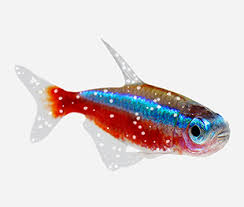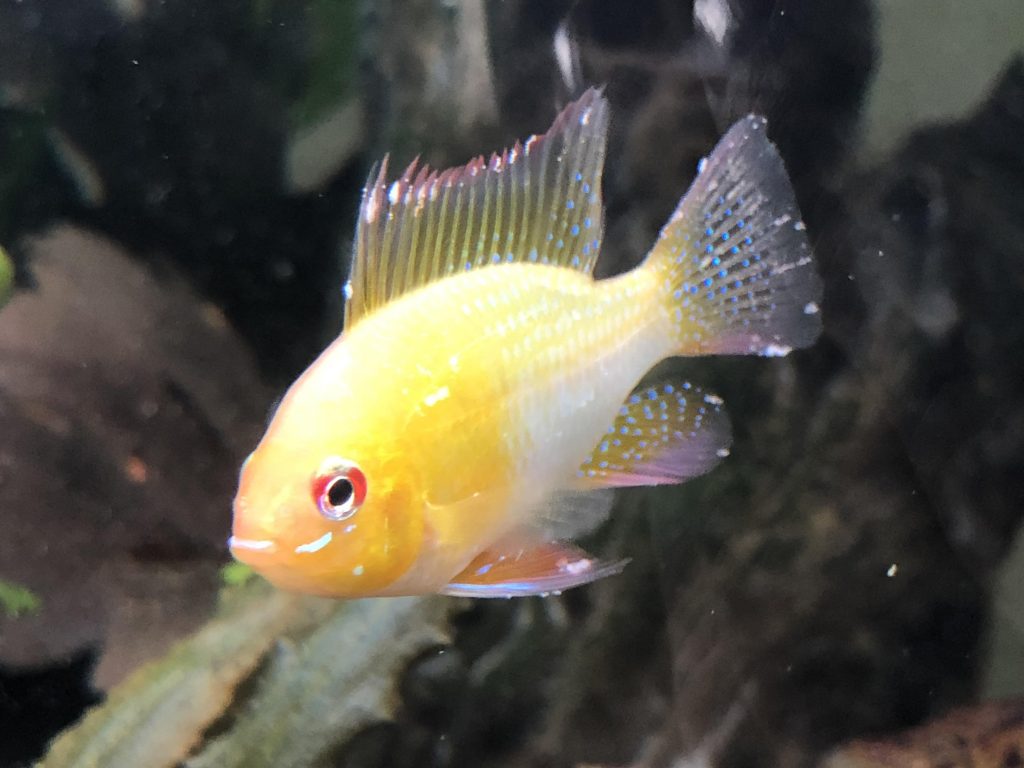ICH/ICHTHYOPHIRIUS MULTIFLIIS
Battling the White Spot Scourge: A Detailed Guide to Understanding, Treating, and Preventing Ich in Your Aquarium
A tiny white spot, almost like a grain of salt, appears on your prized fish’s fin. The next day, there are more. This is the dreaded arrival of Ichthyophthirius multifiliis, more commonly known as Ich or White Spot Disease, one of the most prevalent and persistent parasites to plague freshwater aquariums. While a White Spot outbreak can be a stressful experience for any aquarist, understanding its life cycle, causes, and the various treatment options available can empower you to effectively combat this menace and safeguard the health of your aquatic inhabitants.

What is White Spot? Unmasking the Parasite
White Spot is caused by a single-celled protozoan parasite, Ichthyophthirius multifiliis. These microscopic organisms have a complex, temperature-dependent life cycle that is crucial to understand for effective treatment. The visible white spots on the fish are not the disease itself, but rather the mature stage of the parasite, known as a trophont.
The trophont embeds itself in the skin and gills of the fish, feeding on its tissues and causing irritation. This is the only stage where the parasite is visible to the naked eye. After a period of feeding, the mature trophont detaches from the fish and falls to the substrate or other surfaces in the aquarium.
Once detached, the trophont encysts itself, becoming a tomont. Inside this protective cyst, the tomont undergoes rapid cell division, producing hundreds to thousands of new, infective parasites called theronts.
When the division is complete, the cyst ruptures, releasing the free-swimming theronts into the water column. These theronts must find a fish host within a specific timeframe, typically 24-48 hours, or they will die. Once a host is found, the theront burrows into the fish’s skin or gills, and the cycle begins anew.
The entire life cycle of White Spot is heavily influenced by water temperature. At warmer temperatures, around 24-26°C, the cycle can be completed in just a few days. In cooler water, the cycle can take several weeks. This is a critical factor to consider when choosing a treatment method.
Recognising the Telltale Signs: White Spot Symptoms
The most obvious symptom of a White Spot infection is the presence of small, white, salt-like spots on the body, fins, and gills of the fish. However, other behavioural and physical signs can also indicate an infestation:
- Flashing: Fish may be seen rubbing or scratching their bodies against objects in the tank in an attempt to dislodge the parasites.
- Clamped Fins: Infected fish often hold their fins close to their body.
- Lethargy and Loss of Appetite: As the infection progresses, fish may become listless and refuse to eat.
- Rapid Breathing: If the gills are heavily infested, the fish may gasp at the surface or exhibit rapid gill movement due to respiratory distress.
- Hiding: Fish may become reclusive and hide more than usual.

The Root of the Problem: What Causes White Spot Outbreaks?
While White Spot is often introduced into an aquarium through new, infected fish or contaminated water, an outbreak is typically triggered by stress. A healthy, unstressed fish’s immune system can often fight off a low-level White Spot infestation. However, when a fish’s immune system is compromised, it becomes susceptible to a full-blown outbreak. Common stressors in an aquarium environment include:
- Poor Water Quality: High levels of ammonia, nitrite, or nitrate are significant stressors. Regular water changes and proper filtration are essential.
- Temperature Fluctuations: Sudden or drastic changes in water temperature can weaken a fish’s immune system.
- Improper Acclimatisation: Introducing new fish to an aquarium without proper acclimatisation can cause significant stress.
- Overcrowding: A high fish population can lead to poor water quality and increased aggression, both of which are stressful.
- Inadequate Diet: A poor or imbalanced diet can lead to nutritional deficiencies and a weakened immune system.
- Bullying and Aggression: Harassment from other tank mates can be a major source of stress.
A Multi-faceted Approach: Treatment Options for White Spot
The key to successfully treating White Spot is to target the free-swimming theront stage of the parasite. The encysted trophonts on the fish and the tomonts in the substrate are largely resistant to medication. Therefore, treatment must be administered over a period that covers the entire life cycle of the parasite.
1. Heat and Aquarium Salt:
This is a common and often effective first line of defence, particularly for mild infestations.
- Heat: Slowly raising the aquarium temperature to 28-30°C can speed up the life cycle of the White Spot parasite, causing the trophonts to fall off the fish more quickly and the theronts to be released sooner. It is crucial to ensure that all fish in the tank can tolerate this higher temperature. Increased aeration, with an air stone for example, is vital as warmer water holds less dissolved oxygen.
- Aquarium Salt: Adding aquarium salt (sodium chloride, not table salt which may contain additives) at a concentration of 1-3 grams per litre of water can help create an environment that is inhospitable to the theronts. The salt also aids in the production of the fish’s natural slime coat, which can help to protect it from parasites. Dissolve the salt in some tank water before adding it gradually over several hours, monitoring your fish for any signs of stress. Regular water changes will be needed to reduce the salinity once the treatment is complete.
2. Commercial White Spot Medications:
Several effective medications are available from your local aquatic shop to treat White Spot. These often contain one or more of the following active ingredients:
- Malachite Green: A widely used and effective treatment for White Spot. It is important to follow the manufacturer’s instructions carefully, as it can be toxic if overdosed and can stain aquarium sealant and decorations a blue-green colour. It is often found in combination with formalin.
- Formalin (Formaldehyde): Another potent ingredient used to treat White Spot and other external parasites. It is also toxic and must be handled with care. Products containing a combination of formalin and malachite green are often very effective.
- Copper-Based Medications: Copper is highly effective against White Spot, but it is also highly toxic to invertebrates such as snails and shrimp. Therefore, it should only be used in a fish-only quarantine tank. The copper levels must be carefully monitored with a test kit to ensure they are at a therapeutic but not lethal level.
When using any medication, it is crucial to remove any activated carbon from your filter, as it will absorb the medication and render it ineffective. Follow the recommended treatment duration, even if the white spots have disappeared, to ensure all stages of the parasite have been eradicated.
Prevention is the Best Medicine: Keeping White Spot at Bay
Preventing a White Spot outbreak is far less stressful and more effective than treating one. Here are the cornerstones of White Spot prevention:
- Quarantine All New Additions: This is the single most important step in preventing White Spot. All new fish, plants, and even invertebrates should be housed in a separate quarantine tank for at least 4-6 weeks before being introduced to your main display tank. During this time, you can observe for any signs of illness and treat if necessary without risking your established fish.
- Maintain Excellent Water Quality: Regularly test your water parameters (ammonia, nitrite, nitrate, and pH) and perform regular partial water changes to keep them within a safe range.
- Ensure a Stable Environment: Use a reliable aquarium heater to maintain a stable water temperature. Acclimatise new fish slowly to avoid temperature and water chemistry shock.
- Avoid Overcrowding: Research the adult size of your fish and ensure your tank is large enough to comfortably accommodate them.
- Provide a Healthy Diet: Feed your fish a varied and high-quality diet to boost their immune systems.
- Promote a Peaceful Community: Research the compatibility of fish species before adding them to your tank to minimise aggression and stress.
- Practise Good Biosecurity: Use separate nets, siphons, and other equipment for your quarantine and main tanks to avoid cross-contamination.
By understanding the nature of White Spot, recognising its symptoms, and being prepared with effective treatment and robust prevention strategies, aquarists can significantly reduce the risk of this common disease and maintain a thriving, healthy aquatic environment for their beloved fish.


